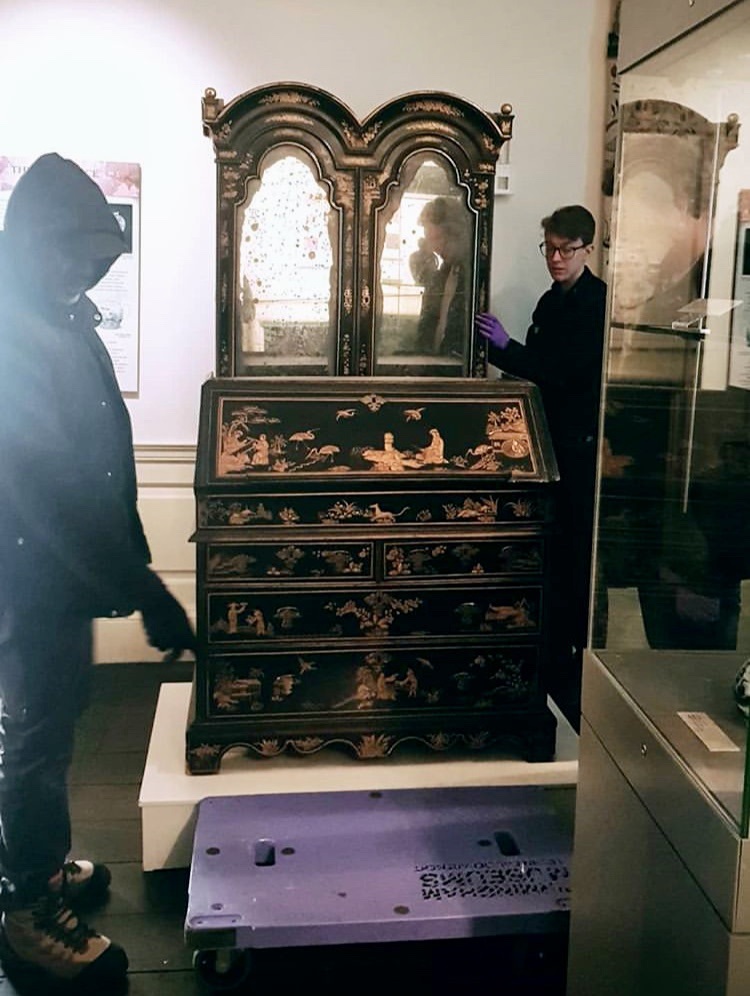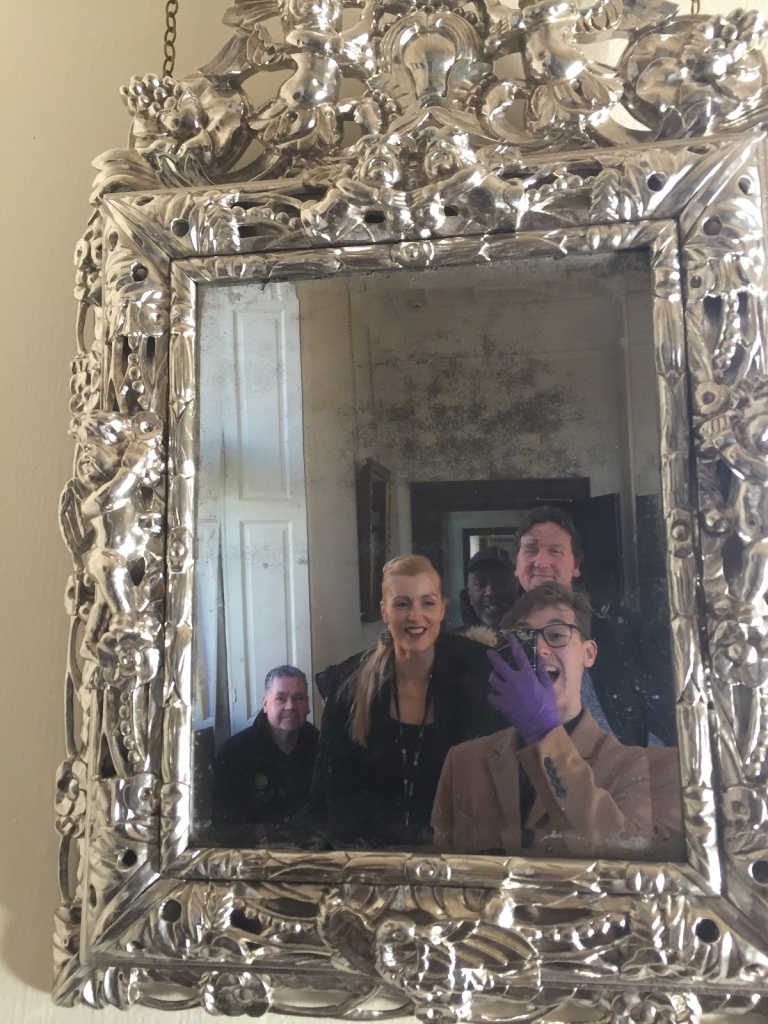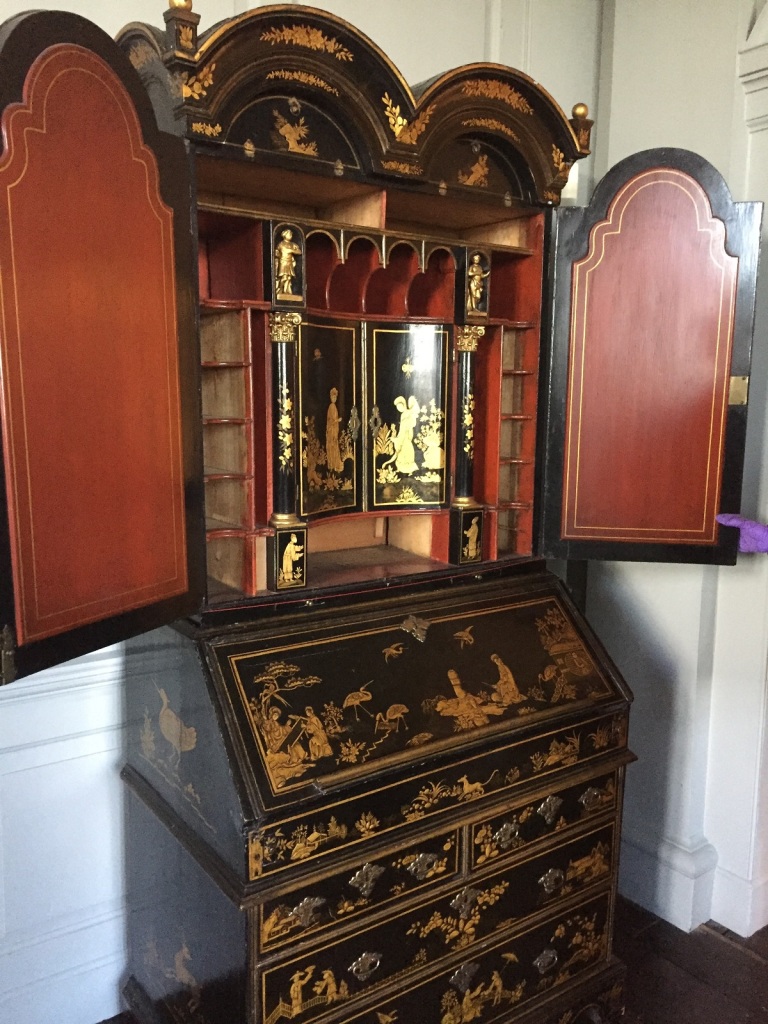Since my last blog post, much of the work which begun before Christmas is finally coming to fruition.

Aston Hall in the sunshine
The first physical movements of objects for Phase 1 of Aston Retold – the five year plan to reinterpret Aston Hall – has begun! After months of deliberation, creating and managing spreadsheets listing every object in the Hall and its new location, proposed location, internal moves, and external moves, the techs have come to Aston Hall and the 17th century rooms have finally begun to transform.
It has been incredibly rewarding to see the physical changes in the Hall realised. This included moving the original 17th century bed, various beautiful bureaus and cabinets, and a full day of painting moves. My responsibilities included not only helping with the physical moves themselves but tracking and documenting all of the object movements as they happened, and even taking the lead on the entire day of painting moves due to other staff being absent.
Alongside the Retold Project, the Exhibitions Curator Katie Morton and I have been curating a complimentary exhibit on animals in art to sit alongside the exciting summer exhibit which will be coming to BMAG May till September. This process has involved extensive object selection, deciding on a key message and themes, and even a day trip to the Natural History Museum! Looking through the weird and beautiful animal objects held at the Museum Collection Centre feels like a real privilege, and because of time constraints and my supervisor’s busy schedule I have had the opportunity to gain additional experience undertaking solo missions at the MCC, making decisions and handling objects throughout the warehouse alone.
The project I have taken on most independently relates to the objects in BMT’s collection which which relate to disabled people’s lives and experiences. After undertaking extensive mapping to identify and research all these objects themselves, this information was collated with research and evidence of best practice into a long report of findings, suggestions, and key contacts. Although this included writing a “Survey of Significance” of the objects’ historical significance, visual impact, potential uses, and more, these categories had to be continually tempered with reminders from museum practice research, highlighting the barriers of trying to make such a complex issue fit the mould of an institutional survey.
This undertaking introduced to me an incredible wealth of research published by the Research Centre for Museums and Galleries, as well as highlighting techniques BMT could learn from, such as the National Disability Arts Collection and Archive’s documentation practices. This research was summarised and presented to the whole curatorial team in a meeting to discuss the possible outcomes of the report. At the very least, curators were prompted to remember objects which were previously unsearchable on KeEmu during the mapping stage of creating the report, and its existence alone makes the objects more accessible for display purposes.
I have learnt a lot from the project, not only through the research itself but also about the practicalities of suggesting change and how to most effectively encourage different practices within museums.
My main fear was that there would be no longevity to the project after my departure, but as the staff at BMT have been aware of the representative gap for a long time, they have been incredibly supportive and receptive. The Director of Development met with me to discuss potential changes to the Equality & Diversity Action Plan, and documentation practices and policy have been flagged as needing review. Hopefully, this will also lead to more active inclusion of disabled people’s experiences and narratives – informed by not only research-led guidelines but consultation with local and national experts, activists, and artists – within the new museum’s permanent Storylines, but only time will tell.
I am proud and grateful to have been a part of and responsible for so many exciting and diverse projects during my time at BMT, and hope that all my work over the last six months will have a lasting impact in a variety of ways.





